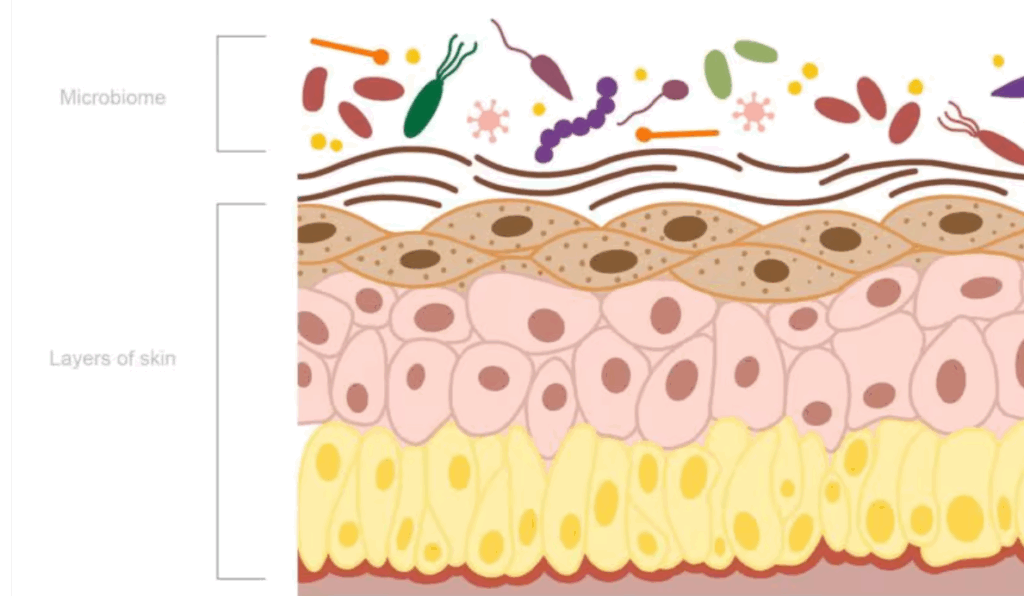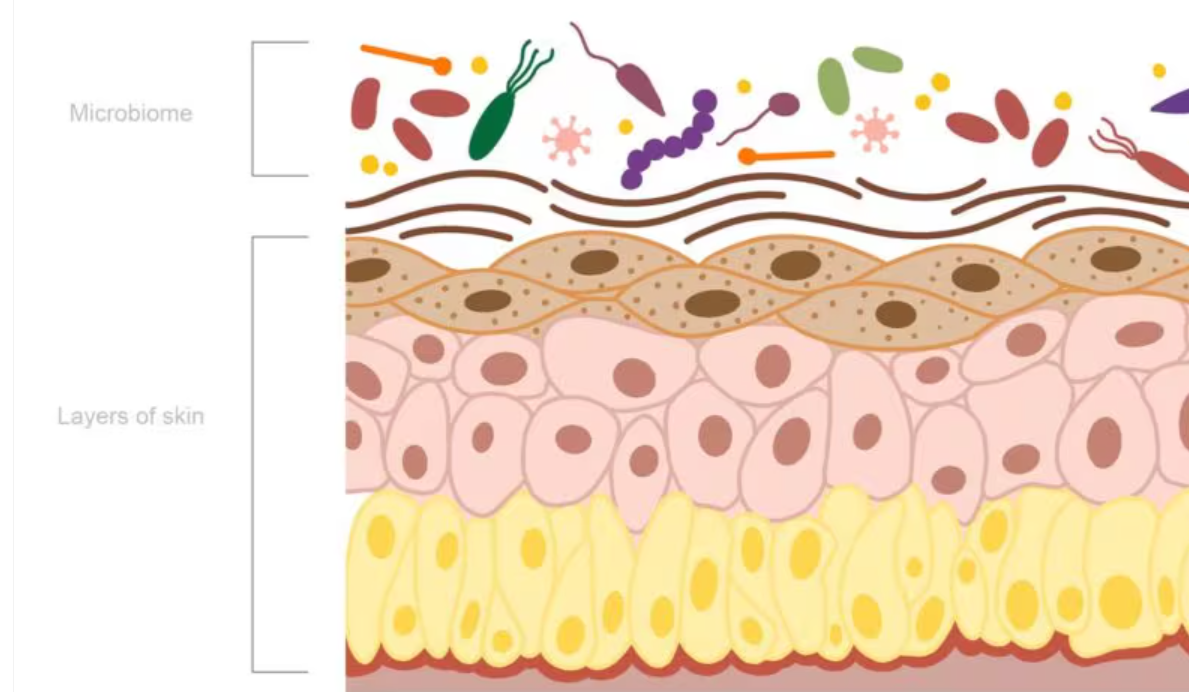The skin microbiome is a critical player in maintaining skin health, influencing pH, lipid composition, and barrier integrity. In Brazil—home to one of the world’s largest cosmetics markets—women’s skin is shaped by unique ethnic diversity and a harsh tropical climate that accelerates photoaging. Yet, little is known about their skin microbiota. Traditional culturing techniques capture only 1% of microorganisms, making metagenomics an essential tool for deeper insights. This study used sequencing methods to analyze the microbiome of Brazilian women and identify patterns that could inform more targeted, microbiome-supportive skincare innovations.
Methods
Forty women aged 25–45 from São Paulo were grouped into 25–35 (G1) and 36–45 (G2) cohorts. Researchers collected forehead swab samples and conducted skin assessments—hydration, TEWL, pH, and oiliness. 16S rRNA gene sequencing (V3–V4 region) via Illumina was performed to classify skin microbiota. Bioinformatics analysis followed to compare microbial diversity and abundance across age groups.
Key Findings
- Microbial Composition: Dominated by Actinobacteria (83%), with lesser Firmicutes (9%), Proteobacteria (7%), and Bacteroidetes (1%).
- Age-Based Shifts: G2 showed increased Actinobacteria (87%) and decreased Proteobacteria (6%)—a trend opposite to some global findings.
- Dominant Genus and Species: Cutibacterium (formerly Propionibacterium) made up 84%, led by C. acnes.
- Genera Variability by Age:
- G1 had more Staphylococcus and less Cutibacterium than G2.
- G2 had more C. acnes and P. acnes-humerusii, less S. capitis.
- 28 genera increased in G2, while 4—including Corynebacterium—decreased.
- Diversity Patterns: Greater beta diversity in G1; alpha diversity remained unchanged.
- Anomalous Findings: 22.5% of participants had extremely low or no C. acnes, unrelated to their clinical profiles—suggesting lipid composition may influence colonization.
This study offers rare insight into the skin microbiome of Brazilian women—a group underrepresented in literature but central to the cosmetics market. Contrary to international studies, older Brazilian women showed an increase in C. acnes, prompting questions about ethnicity, skincare habits, and sun exposure. From a topical development standpoint, these findings support the creation of anti-aging formulations tailored to ethnic microbiome profiles. By leveraging metagenomics, formulators can enhance the growth of beneficial microbes and modulate species like C. acnes through lipidomic strategies. This paves the way for truly personalized skincare rooted in microbial balance.
Link to the study: https://www.mdpi.com/2079-9284/12/4/165


